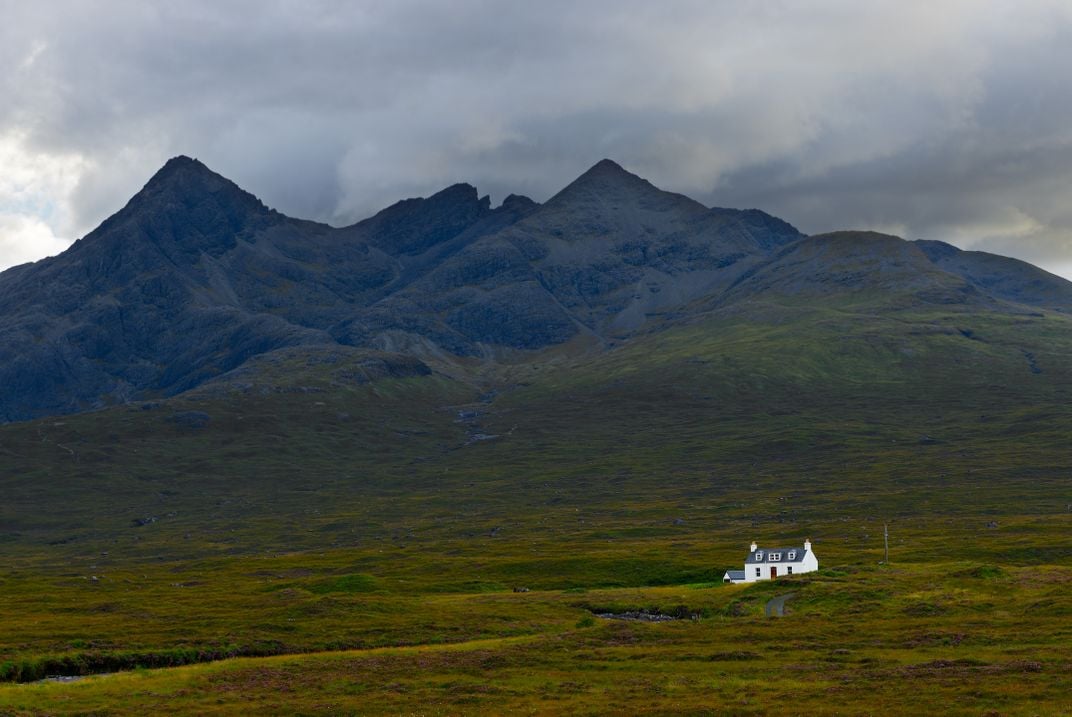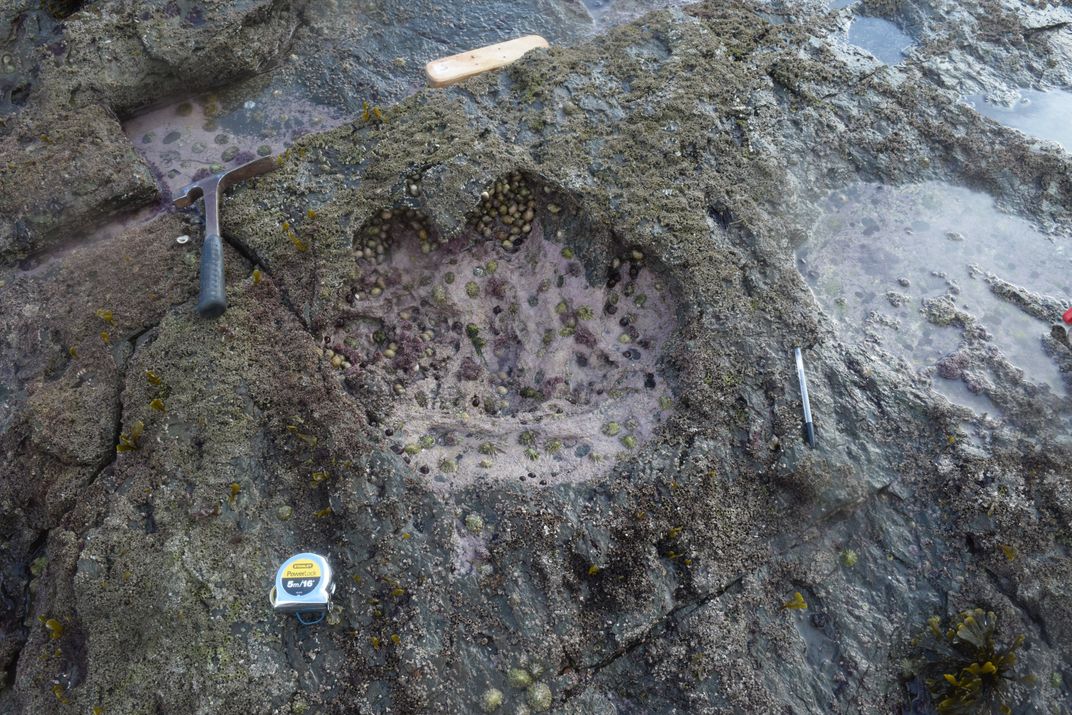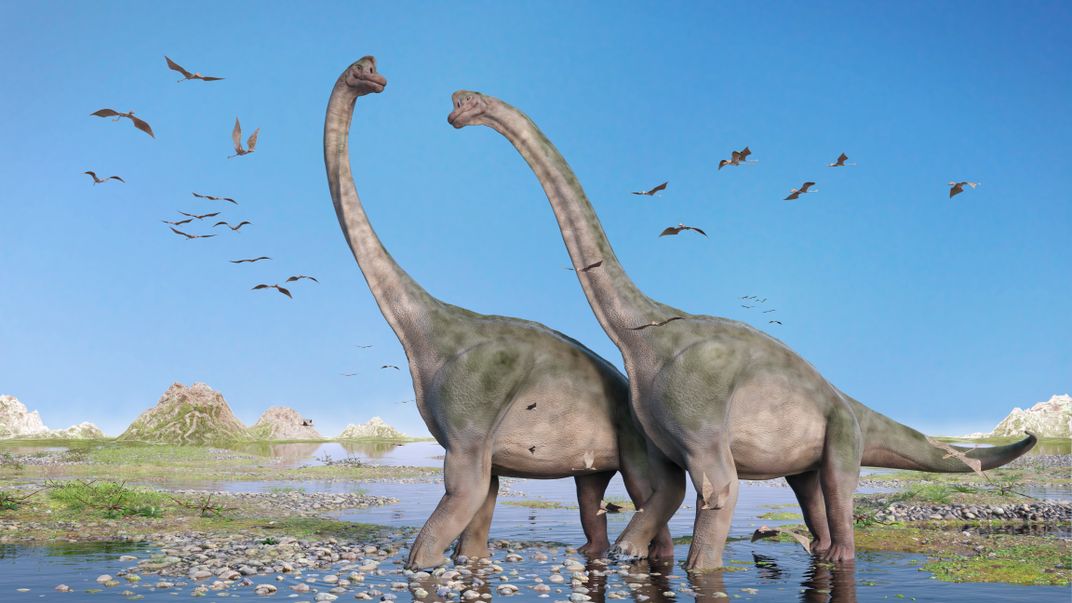SMITHSONIAN SCIENCE EDUCATION CENTER
Scotland’s Jurassic Island: What Scientists Can Learn From Footprints
New evidence, in the form of footprints, has made scientists rethink sauropods as being purely land dwellers.
Mountains in the mist
The Isle of Skye is a 50-mile-long island in the Atlantic Ocean, just off the west coast of Scotland. It is famous for its dramatic scenery and wet weather. Its mountain ranges have names that wouldn’t look out of place in a Tolkein novel: Red Cuillin, Black Cuillin, Trotternish. It is a place where office workers come to de-stress and adventure seekers come to climb some of the most challenging mountains in Europe. Car manufacturers film new models of cars being expertly handled on Skye’s near empty winding roads. It is also an island where dinosaurs used to roam. Recently, there have been several discoveries of fossils in Skye from the Middle Jurassic period (174–164 millions of years ago). The Middle Jurassic period was an important time in the evolution of dinosaurs. It was when the first birds started to fly, meat eaters started to diversify, and long-necked sauropods (herbivores such as Brachiosaurus) started to get really big. Fossils from this period are rare, so now Skye has a new type of visitor: scientists.

Evidence in the rocks
Fossils are usually found in sedimentary rock. Sedimentary rock is formed when small particles are compressed into layers over time. Sedimentary rock includes limestone, sandstone, and shale. It was in this type of rock on the northeast coast of the Trotternish Peninsula that scientists recently discovered 50 dinosaur footprints. Dinosaur footprints are trace fossils; that is, fossils that show evidence of animals and plants. Trace fossils can include animal tracks, impressions, and burrows and are usually more common than body fossils (fossils of animal parts). Most trace fossils are formed in soft mud or sand near a pond, lake, river, or beach. The imprints left by the organisms are quickly covered by sediment. The sediment dries and hardens before the imprints can be erased by water or wind. The sediment is then buried under more sediment and becomes compacted and cemented together to form rock.

Whose feet are these?
Tracks can tell scientists how a dinosaur moved and lived. They can also tell scientists what type of dinosaur made the footprints. Most of the 50 footprints discovered recently were made by sauropods. From the dimensions of the footprints, scientists think that the tracks were made by relatively small sauropods, a mere 1.5-2.5 meters high at the hip. From the spacing of the footprints and orientation of the toes, scientists were able to tentatively identify the sauropods as Breviparopus. Unusually, among the sauropod tracks were also several theropod tracks. Theropods were meat-eating dinosaurs such as Tyrannosaurus rex. The theropod footprints showed these dinosaurs to be tridactyls with three clawed toes. As with the sauropods, they were relatively small with a hip height ranging from 0.9 m to 2.1 m.

Dinosaur environment
Scientists found fish and shell fossils in the rock layer where the footprints were found. Analysis of this rock layer indicated that the makers of these tracks were walking in shallow water in a nearshore, lagoon environment. This matched evidence from other sauropod tracks previously found on Skye. This evidence has made scientists rethink sauropods as being purely land dwellers. So scientists can tell from one set of tracks the size of a dinosaur, whether it is a herbivore or carnivore, what kind of species it is likely to be, and what kind of environment it lived in. Who knew that a footprint could reveal so much!

Reference
dePolo, P. E. S. L. Brusatte, T. J. Challands, D. Foffa, D. A. Ross, M. Wilkinson, and H. Yi. 2018. A sauropod-dominated tracksite from Rubha nam Brathairean (Brothers’ Point), Isle of Skye, Scotland. Scottish Journal of Geology, in press. https://doi.org/10.1144/sjg2017-016

